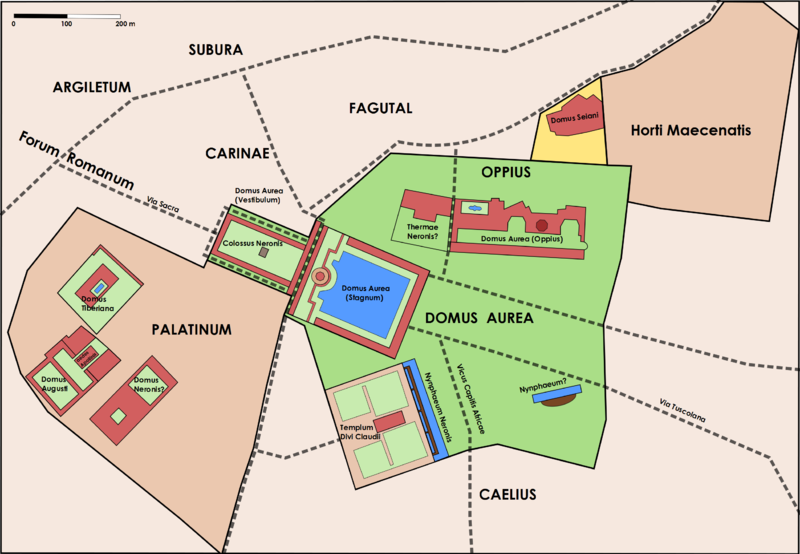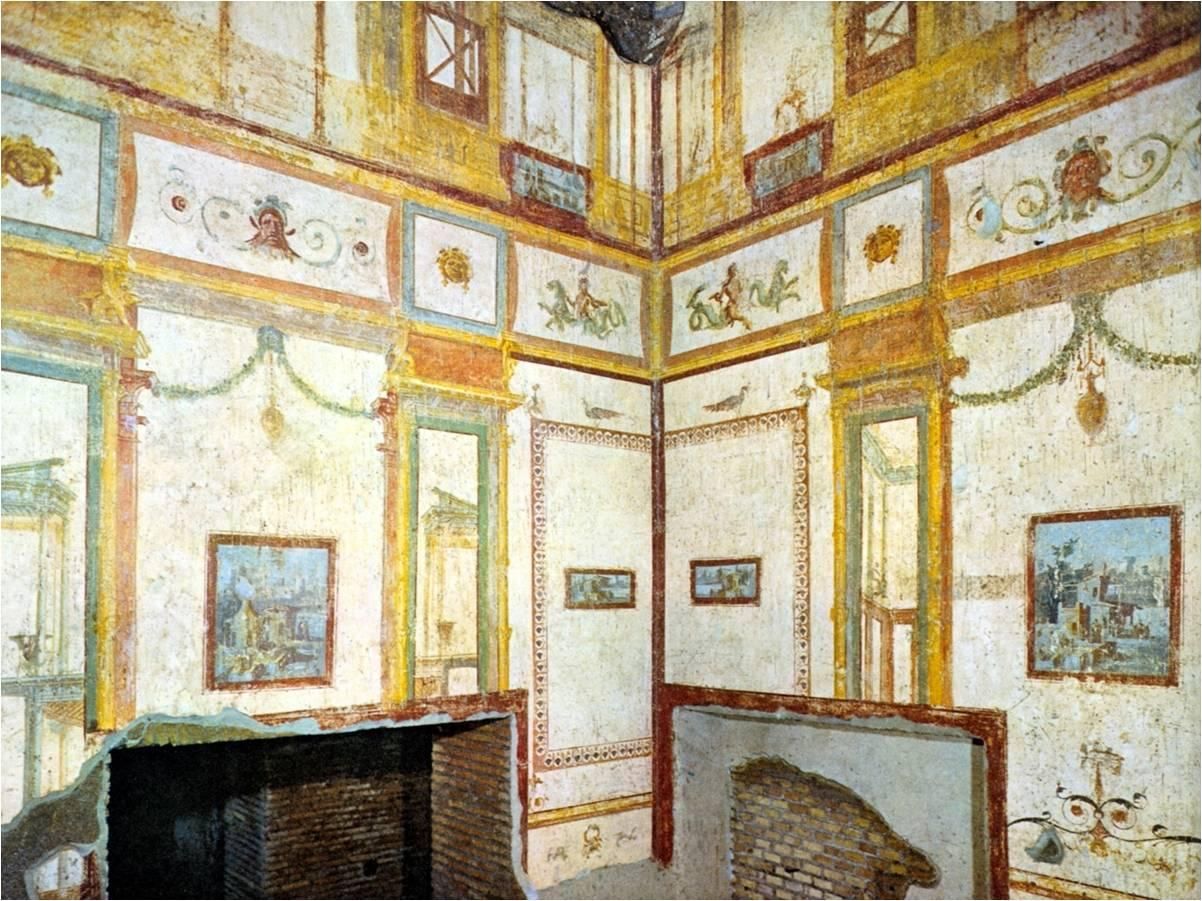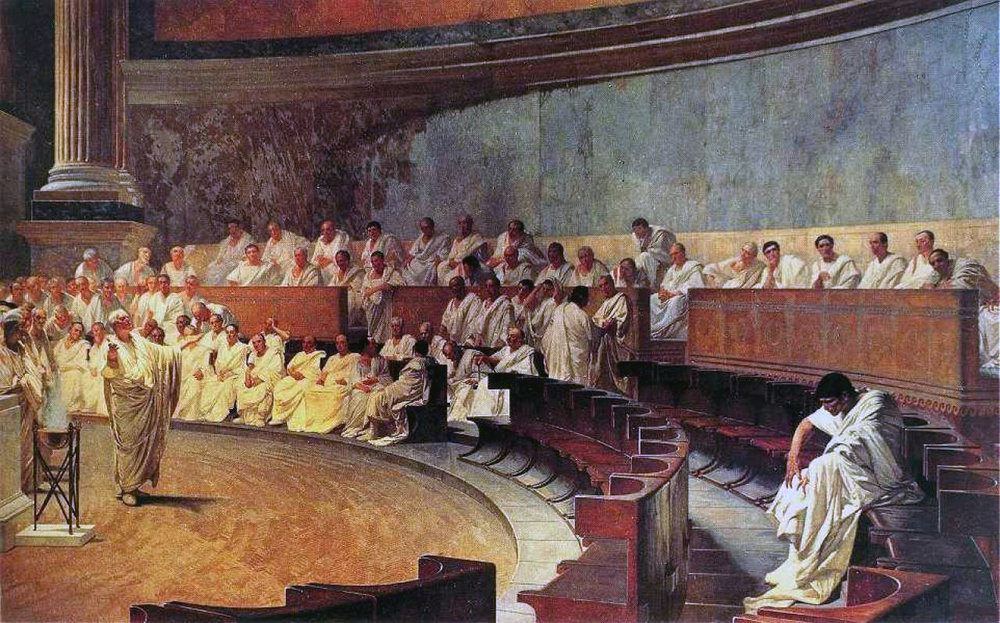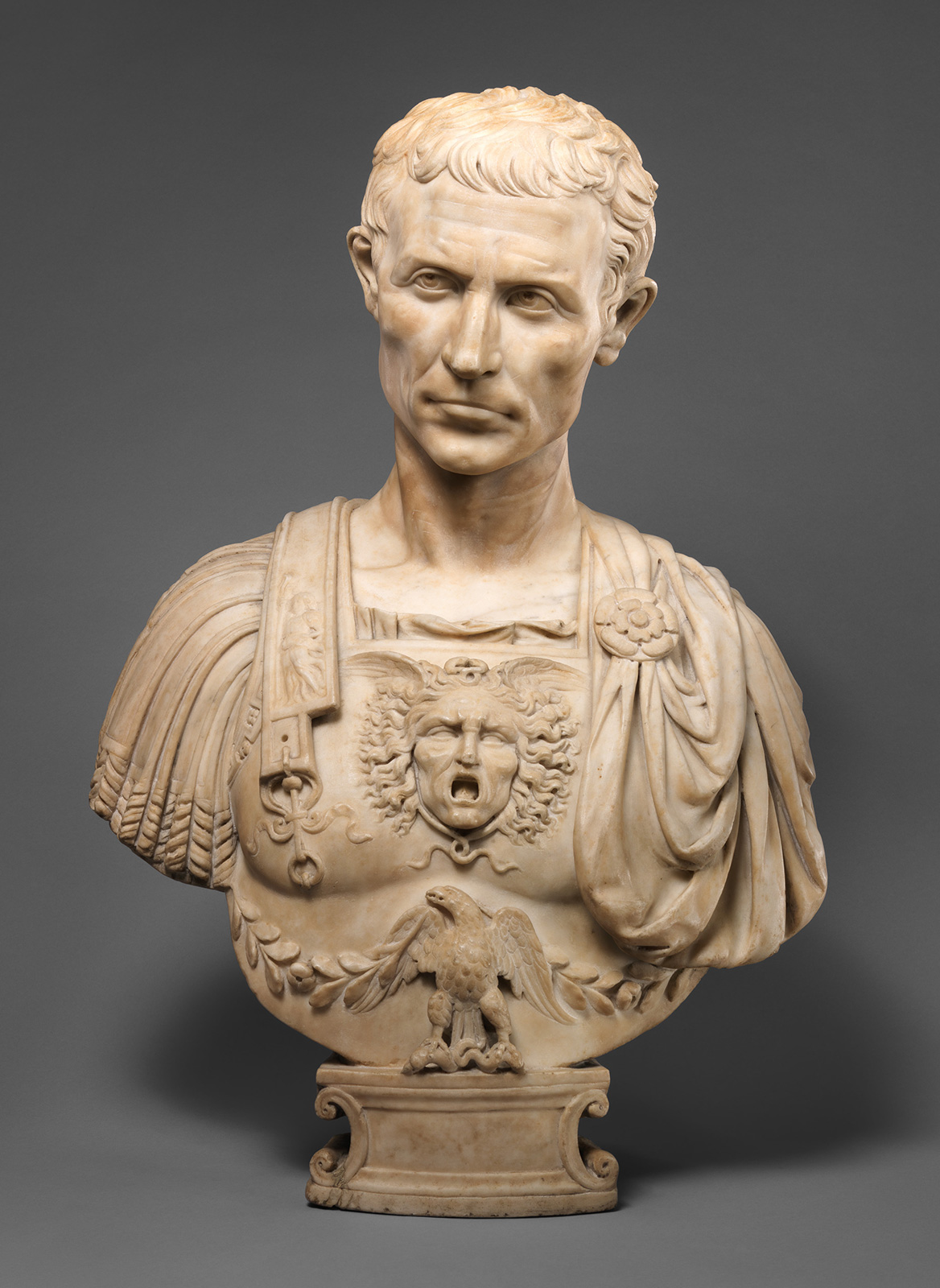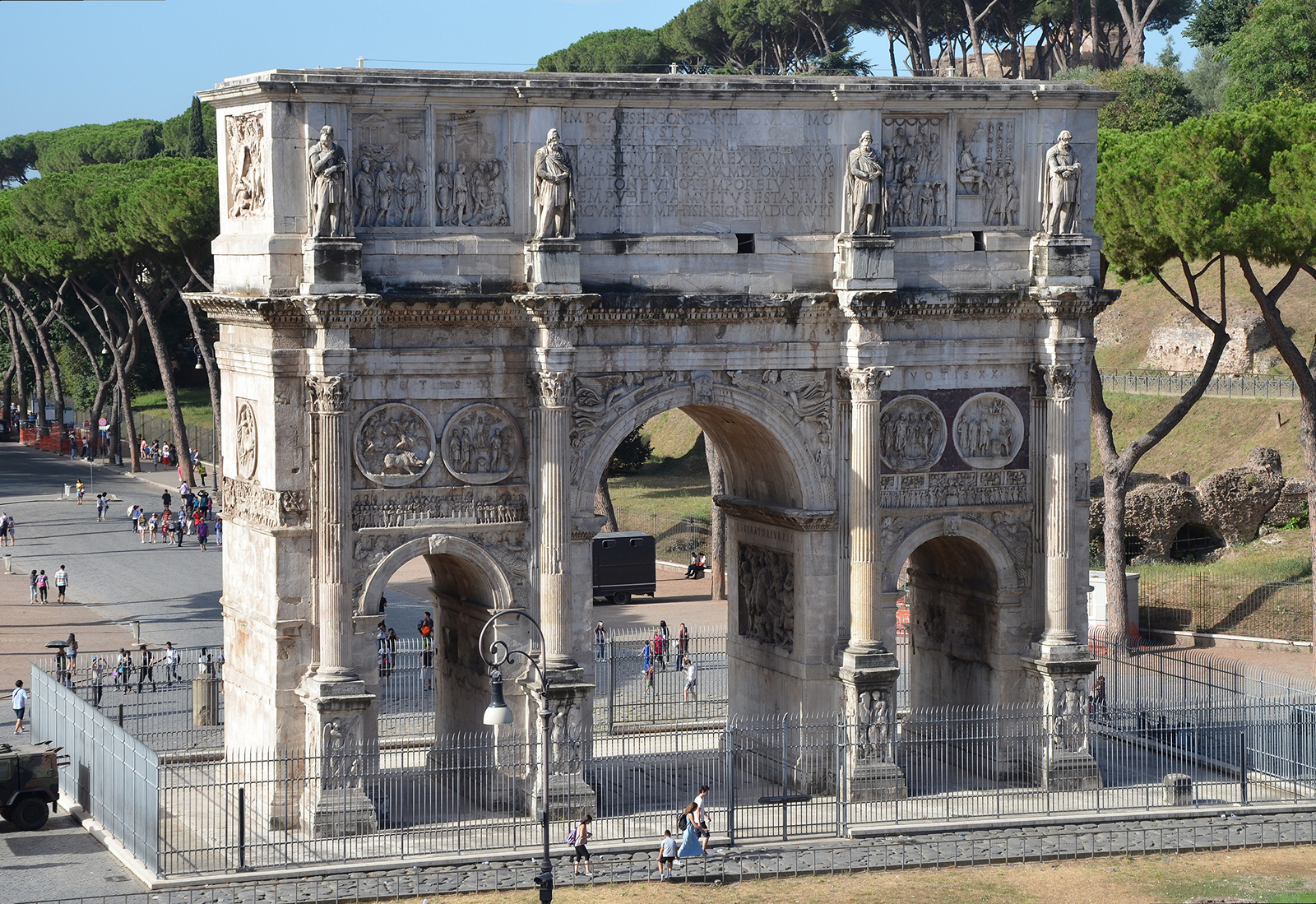Domus Aurea
The Domus Aurea, or Golden House, was a huge pleasure palace built by the emperor Nero after the great fire of 64AD. Rumours at the time blamed Nero for starting the fire because he profited from the fire, confiscating public land in the centre of the city. Despite the rumours, Nero wasn’t actually in Rome when the fire started and rushed back to help with the aftermath.
Nero was a lover of the incredible and sought to impress with the grandeur of his new palace, he indulged his musical, sporting and artistic interests in the most outrageous, self-indulgent palace ever built. When he killed himself aged 30, he lamented “Oh what an artist dies in me!” Nero was well loved in his own time; he was adored much like Elvis. His rebuilding of the city and the palace would have given work to thousands of people. The general population, who had enjoyed Nero’s employment, his games, amenities and his Golden House mourned his death.
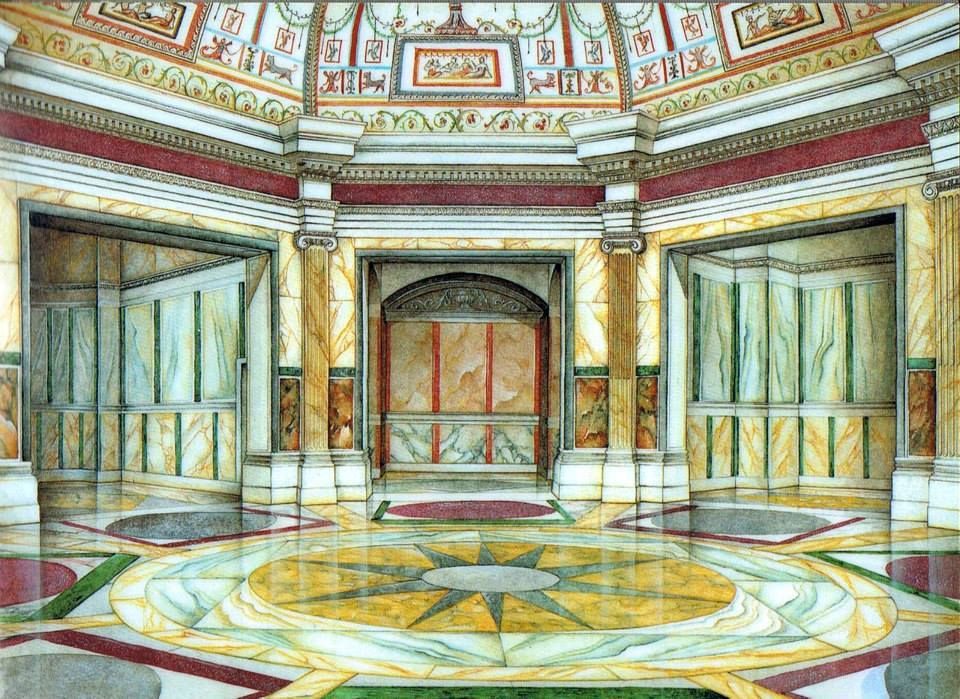
Nero’s Golden house was an outrageous extravagance that spanned three of Rome’s hills stretching from the Palatine to the Oppian and Caelian hill. It was left unfinished at the time of his death in 68AD and most of it was quickly destroyed and built over by successive Emperors.
He chose two of the best architects of the day – Severus and Celer who achieved the unthinkable; the building was the first to use concrete to achieve a monumental building project with huge domed structures supported by brick-faced concrete walls. The finest artists decorated the walls with fresco. Descriptions of the time say the palace was extravagantly decorated with gem-encrusted walls, mother-of-pearl and ivory décor on a golden backdrop. Flowers and perfume could be dropped from a revolving ceiling. At the time of Nero, it was the marble that impressed visitors – marble from all over the world
expressed lavishness, expense and ultimate power. Against this backdrop was the biggest private art gallery in the world filled with artwork stolen from all over the empire.
Over 125 acres were taken up by three wings of the palace set in cornfields, vineyards, pastures and woodlands as if a part of the countryside had been brought into the city. He even re-routed an aqueduct to feed a monumental wall fountain (nymphaeum) that cooled the dining rooms and created ambience. At the centre of the complex was a huge man-made lake the size of five football fields (where the colosseum is today). Two main roads led through the complex which allowed the people to see and partake in the splendour.
To top it all off he went a step too far by erecting a huge bronze statue of himself in the gardens, inspired by the Colossus of Rhodes. The Colossus of Nero 120-foot-high (30m) by Zenodorus depicted the sun God Sol with Nero’s face. The statue and his public performances were seen as embarrassing, he ignored the elite and the senate which would lead to his demise.
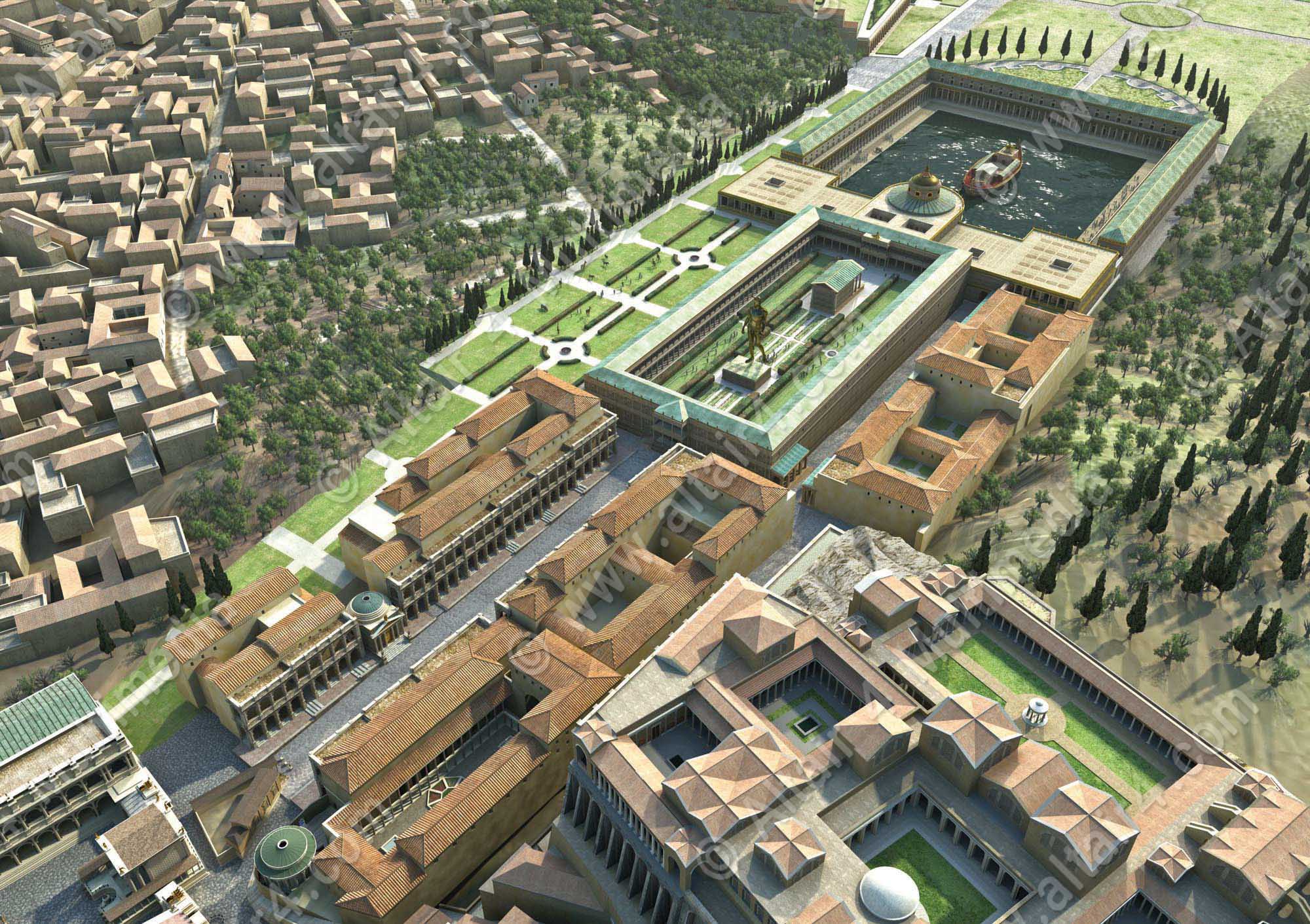
Rome’s first dynasty died with Nero in 68 AD. Shortly after the Flavian Dynasty came to power; Nero’s successors had to go one better, first, by condemning his memory and secondly, by building something even more magnificent, more popular than the Golden House – an amphitheatre. The whole area was gradually reconstructed; new temples, new shops and bars and above all the lake was drained, covered with concrete and used as the site for the most popular building that Rome would ever see exploiting the base appeal of gladiatorial combat. It is somewhat ironic that the name of that building today refers to the colossal bronze statue of Nero!
In 1488, a small piece was rediscovered under woodland and vineyards. The rooms had been stripped before being built over, but the frescoes were still intact. Renaissance artists Pinturicchio, Ghirlandaio, Raphael and Giulio Romano lowered themselves into the darkness to look at the frescoes. They would recreate the style they found (today called Grotesque); a good example is the loggia of Raphael at the Vatican and the decoration of Castel St Angelo.
The parts of the Domus Aurea that can be visited today are those on the Oppian hill (the park next to the colosseum); these areas were probably used for holding festivities and banquets as no living quarters have been found. Only a handful of around 120 rooms that have been excavated can be visited, but it is enough to imagine the scope and splendour. Some frescoes can be seen and the Octagonal room at the
centre where Nero would likely have greeted his guests is impressive when we remember this was built long before the dome of the pantheon.
